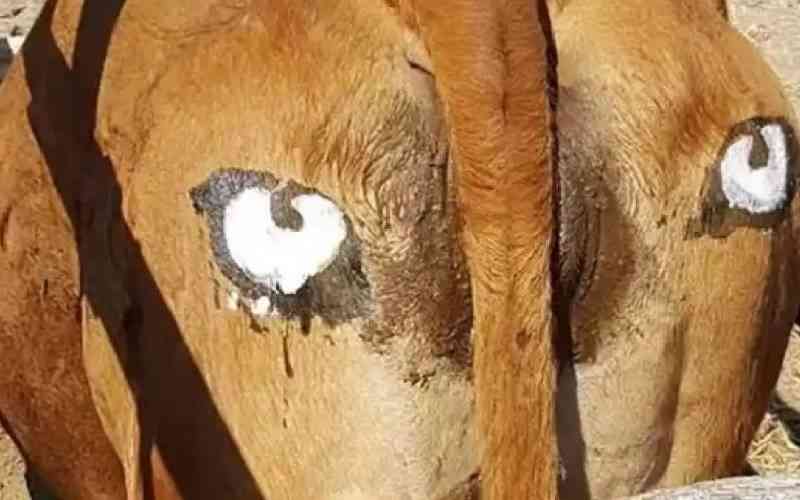×
The Standard e-Paper
Fearless, Trusted News

Eyes painted on a cow's behind to scare away predators. [Courtesy]
Painting artificial eyes on the rumps of cows might be the new way to solve the cases of human-wildlife conflicts in the Mara, according to ongoing research.